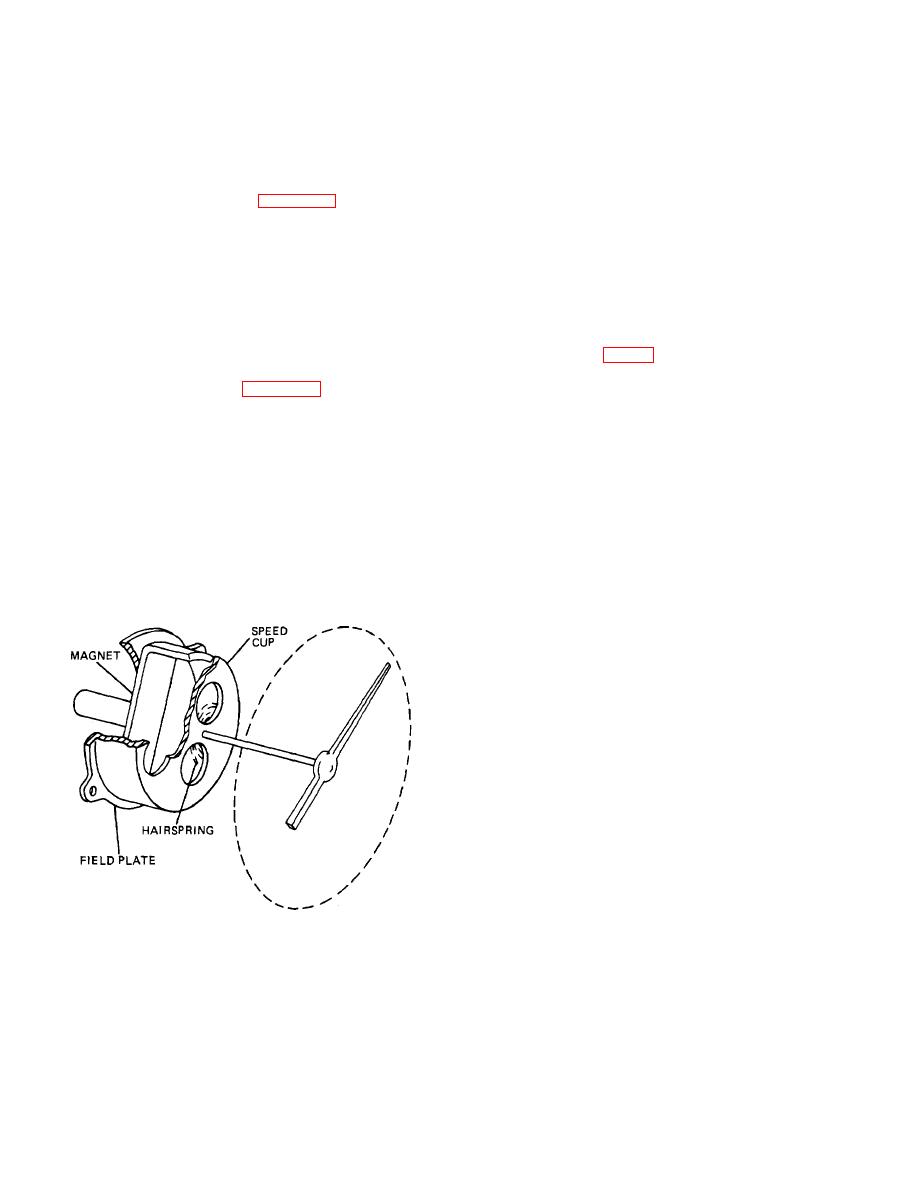
| Tweet |

Custom Search
|
|

|
||
 TM 9-8000
gears are selected to drive the speedometer, it is
odometers usually do not record tenths on the total
Important that the drive axle gear ratio and the diameter
odometer and therefore will contain five digits. When the
of the tires on the drive wheels be taken Into
odometer reaches its highest value, it will reset to zero
consideration so that the speedometer will be driven at
automatically. Most new automobiles incorporate a small
the proper speed.
dye pad in the odometer to color the drum of its highest
digit to indicate that total vehicle mileage is in excess of
(3) The speedometer (fig. 17-17) consists of a
the odometer's capability.
permanent magnet that is rotated by the speedometer
cable. Surrounding the rotating magnet is a metal cup
(5) The trip odometer also is driven by a series of
that Is attached to the speedometer Indicating needle.
gears from the input shaft. It usually contains four digits
The revolving magnetic field exerts a pull on the cup,
to record 999.9 miles or kilometers before resetting itself
causing it to tend to rotate. The rotation of the cup Is
to zero. The trip odometer is connected to an external
countered by a calibrated hairspring. The influence of the
knob and can be reset to zero by the vehicle operator.
hair spring and rotating magnetic field on the cup
c. Mechanical Tachometers and Engine Hours
produce accurate speed readings by the needle that is
Gage
(Fig. 17-19). A
attached to the cup.
mechanical tachometer
operates exactly the same as the mechanical
(4) The odometer (fig. 17-18) is driven by a
speedometer described in paragraph 17-6b. The main
series of gears that originate at a spiral gear on the Input
difference is that it is driven by the engine and is
shaft. The odometer consists of a series of drums with
calibrated to measure engine speed. The engine-hours
digits printed on their outer circumference that range
gage is incorporated in the tachometer in most cases.
from zero to nine. The drums are geared to each other
Its purpose is to keep a record of operating time. It
so that each time the one furthest to the right makes one
measures in hours to the nearest tenth.
revolution, it will cause the one to its immediate left to
d. Electric Speedometer and Tachometer (Fig. 17-
advance one digit. The second to the right then will
advance the drum to its immediate left one digit for every
20). The electric speedometer or tachometer utilizes a
revolution that it makes. This sequence continues to the
mechanically driven permanent magnet generator to
left through the entire series of drums. The odometer
supply power to a small electric motor. The electric motor
usually contains six digits to record 99,999.9 miles or
then is used to rotate the input shaft of a mechanical
kilometers. Models with trip
speedometer or tachometer whose operation is the
same as the one described in paragraph 17-6b. The
voltage from the generator will increase proportionally
with speed and the motor speed will likewise Increase
proportionally with voltage, enabling the gages to indicate
speed. The signal generator for the speedometer usually
is driven by the transmission output shaft through gears.
The signal generator for the tachometer usually is driven
by the distributor through a power takeoff on gasoline
engines. When the tachometer is used with a diesel
engine, a special power takeoff provision is made,
usually on the camshaft drive.
e. Electronic Speedometers and Tachometers.
Electronic speedometers and tachometers are self-
contained units that use an electric signal from the
engine or transmission as an indicator to formulate a
reading. They differ from the electric units described in
paragraph 17-6d that use the generated signal as the
driving force. TA233631
Figure 17-17. Mechanical Speedometer Operation
17-13
|
||
 |
||